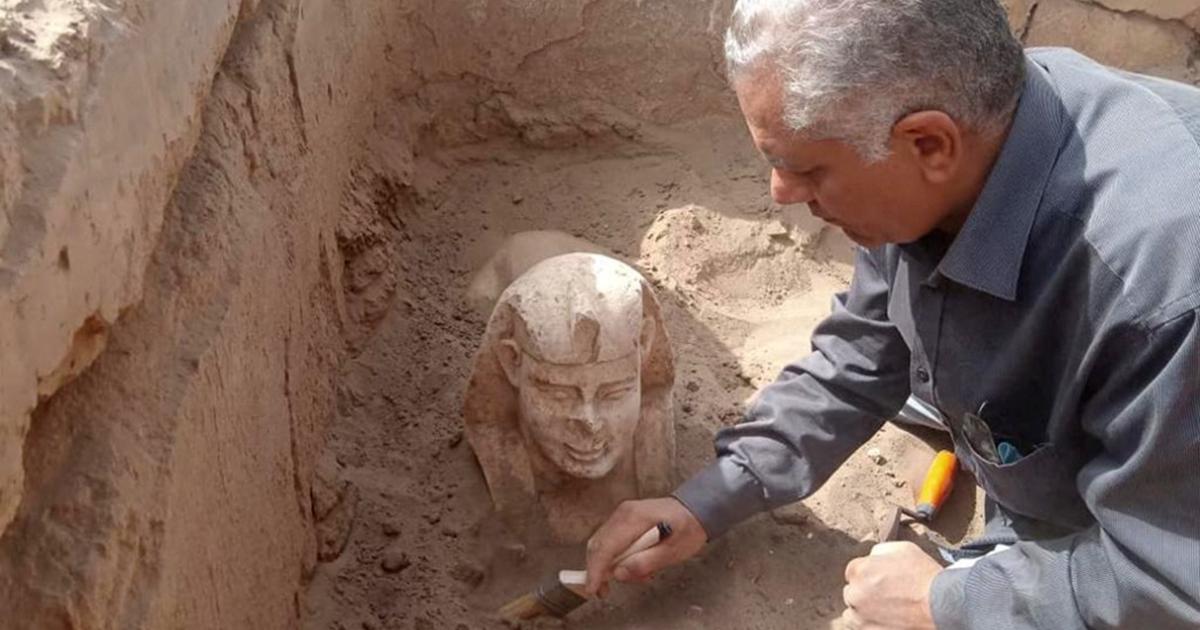The face that emerged from the sands of Egypt, near Dendera, looked astonishing.
A half-smile flanked by dimples crossed the placid head covered with the Nemes, the headgear of the pharaohs, unearthed in recent days from an archaeological dig.
Striking contrast with the usual hieratic coldness of Egyptian statuary.
Under the head, the researchers unearthed the remains of a sphinx statue, carved from a block of limestone.
The set could represent the Roman Emperor Claudius, in power between 41 and 54, the Egyptian Ministry of Tourism and Antiquities announced on Monday.
According to authorities, this smiling sphinx was unearthed near the Temple of Hathor in Dendera, about 50 kilometers north of Luxor, where the Zodiac of the same name was discovered, one of the most important treasures of the Egyptian collections of the museum. of the Louvre.
The statuette was found in “
a Byzantine basin laid out inside a two-tiered burial
” alongside a “
Roman stele engraved in demotic and
hieroglyphics”.
The epigraphic study of the inscriptions could confirm the exact identity of the emperor represented by the sphinx, which the Egyptian team in charge of the excavations identifies for the time being with Claudius, due to a few stylistic details.
Tourism strategy
The Dendera zodiac joined Paris when in 1820 the French prefect Sébastien Louis Saulnier sent a team to unseal this bas-relief with explosives.
This representation of the celestial vault of more than 2.5 meters in width and height has hung on a ceiling in the Louvre since 1922, while a plaster copy replaces it in Dendera.
His return has been claimed by Egypt for several years.
Read alsoA wreck of the French East India Company identified at the bottom of a port in the West Indies
In recent months, several major discoveries have been presented by the Egyptian archaeological authorities, mainly in the necropolis of Saqqara near Cairo - where the step pyramid of King Djoser is located -, but also on the Giza plateau, where stands in particular the great pyramid of Cheops, the last of the seven wonders of the ancient world still standing.
On Thursday, Cairo announced that it had explored a nine-meter corridor, which had remained hidden for more than four millennia inside the monument.
Further south, in Luxor, the Thebes of the pharaohs, remains of
“an entire Roman city”
dating from the first centuries of our era have recently been unearthed.
For some experts, these announcement effects have more political and economic than scientific significance.
Plunged into a serious economic crisis, the country of nearly 105 million inhabitants is counting on tourism to restore its finances.
The Egyptian government thus hopes to cross the bar of 30 million tourists per year by 2028. Before the Covid-19 crisis, 13 million visitors each year offered themselves, on average, a stay in the land of the pharaohs.

